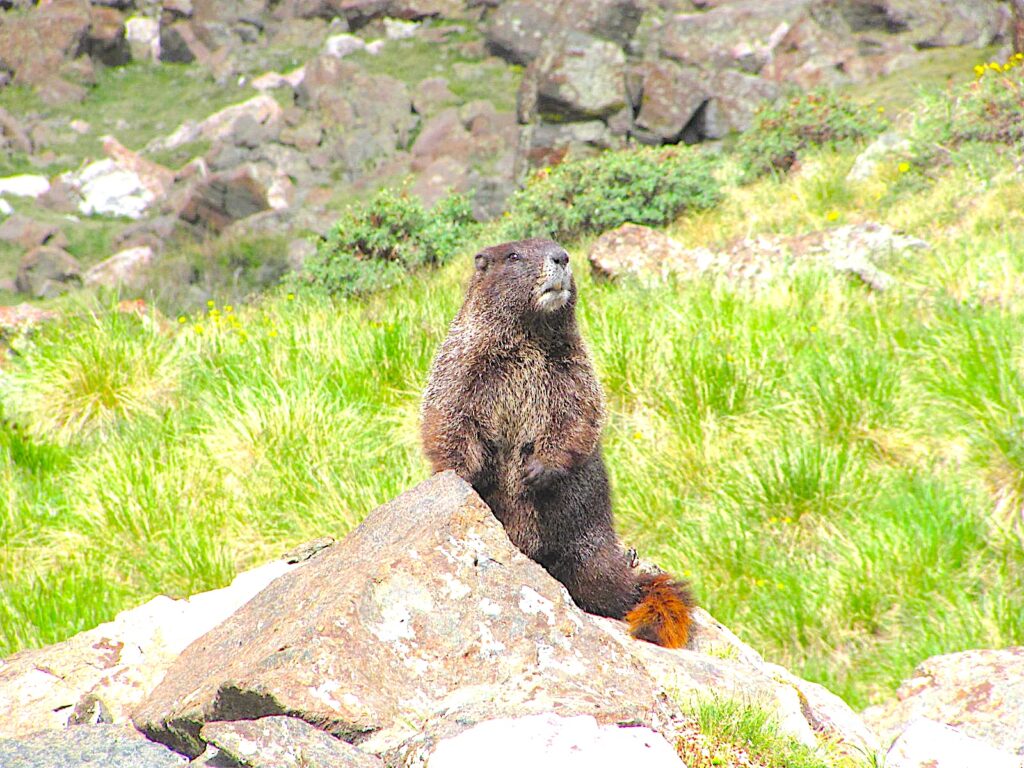Wheeler Peak
New Mexico
July 2013
Halfway down from the highest high point we’ve climbed so far (13 161 feet,) in the nearby rocks, is a marmot.
Before we see him, we hear his whistling. Or maybe its his chirp, or yip, trill, cluck, bark or chuck. We call his call by a lot of call names. Because of the different translations of their vocalizations and other habits, marmots have also been called whistle pigs, woodchucks, rock chucks, groundhogs, ground squirrels, land beavers, pharaoh’s rats and many other cute or foul names. The word marmot can be translated as “mountain mouse.”
Unlike the bighorn, these guys are pretty social, living with up to a couple dozen compadres, like the commune I shared when I was in college. And like in that commune, marmots spend most of their time in their burrows. And like my commune, the burrow will be divided into a dining room, living areas, bedrooms and a toilet place.
The rocks and boulders of talus fields allow them to conceal their burrow systems from predators such as eagles, fox, badgers, weasels, bobcats and mountain lions. And humans.
Like I say, we hear this guy for quite a while before actually seeing him. And when the time comes, we see him easily.

He is content to perch on a rock doing his job as lookout for his harem, guarding his burrow and protecting the pups, or kits. Yes, a group of marmots is called a harem. If you are familiar with their dating habits, it makes perfect sense. The males keep a group of breeding females handy to maintain their family. Studs, one and all. Don’t blame me for sexism, I’m only the messenger.
In my research, I came upon a hilarious recipe called Vanilla Marmot Surprise. When you serve it to guests, surprise!
We’re in the West. These overgrown squirrels, of which there are 15 species, are called marmots. In the East, we call them groundhogs or woodchucks.
Groundhogs? Woodchucks? I hear Lisa, stepping carefree down the mountain, singing…
How much ground would a groundhog hog
if a groundhog could hog ground?
She is very proud that she got it right on the first try. Lisa has many talents.
Meanwhile, if you are curious about the amount of wood a woodchuck could chuck — and who isn’t? — you could check with New York state wildlife expert Richard Thomas. In the late 1980s, he calculated that if a woodchuck could chuck wood, it would chuck 35 cubic feet or 700 pounds of dirt in the course of digging a burrow. That’s some chucking!
But alas, that’s a woodchuck chucking dirt and not chucking wood. It leaves the question unanswered.
As if to settle the issue, behold this additional one from Lisa…
How much mar would a marmot mot if a marmot could mot mar?
